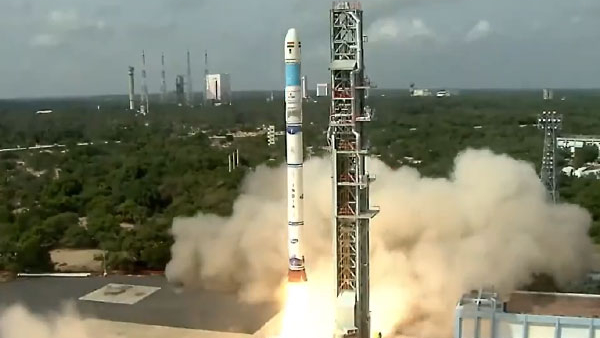Lagatar24 Desk
Sriharikota: The Indian Space Research Organisation (ISRO) achieved another significant milestone today as it successfully placed an Earth Observation Satellite (EOS-08) into its intended orbit. The successful mission was carried out using the Small Satellite Launch Vehicle-D3 (SSLV-D3), marking the final developmental flight of this rocket series.
The SSLV-D3 lifted off from the first launch pad at the Satish Dhawan Space Centre in Sriharikota, located approximately 135 km east of Chennai, at precisely 9:17 am. The launch was executed with precision, underscoring ISRO’s continued leadership in space technology.
The primary objectives of the SSLV-D3-EOS-08 mission included the design and development of a microsatellite and the creation of payload instruments compatible with the microsatellite bus. The Bengaluru-based space agency emphasized the advanced capabilities of the EOS-08, which is built on the Microsat/IMS-1 bus.
The EOS-08 satellite carries three crucial payloads: the Electro Optical Infrared Payload (EOIR), the Global Navigation Satellite System-Reflectometry payload (GNSS-R), and the SiC UV Dosimeter. These payloads are designed to serve a variety of applications:
- EOIR Payload: This component is engineered to capture images in both the Mid-Wave IR (MIR) and Long-Wave IR (LWIR) bands, day or night. Its applications include satellite-based surveillance, disaster and environmental monitoring, fire detection, volcanic activity observation, and monitoring of industrial and power plant disasters.
- GNSS-R Payload: This payload demonstrates the use of GNSS-R-based remote sensing for various purposes, such as analyzing ocean surface winds, assessing soil moisture, conducting cryosphere studies over the Himalayan region, detecting floods, and monitoring inland water bodies.
- SiC UV Dosimeter: This device monitors UV irradiance at the viewport of the Crew Module in the upcoming Gaganyaan Mission and acts as a high-dose alarm sensor for gamma radiation.
This successful mission underscores ISRO’s ongoing commitment to advancing space technology for both national and global applications. As India continues to expand its capabilities in satellite surveillance and disaster response, missions like SSLV-D3-EOS-08 highlight the critical role that space technology plays in enhancing our understanding of the planet and improving disaster preparedness.








